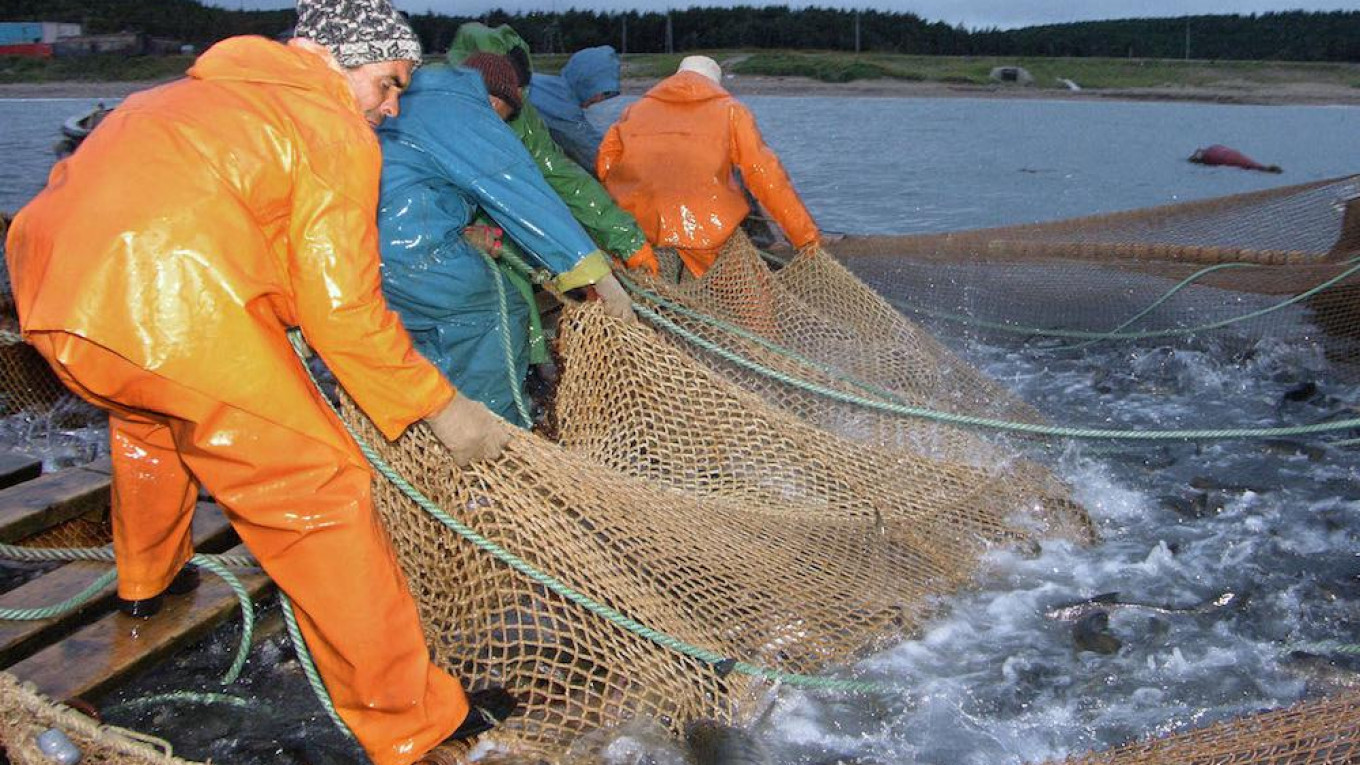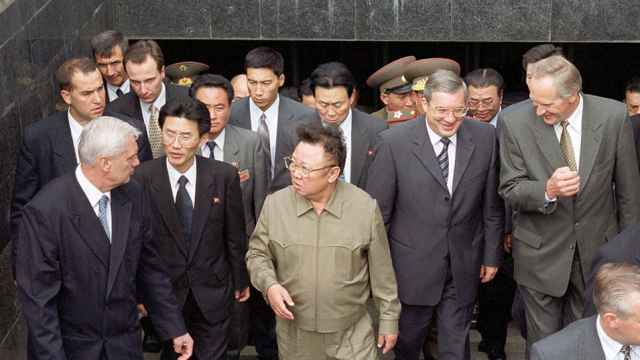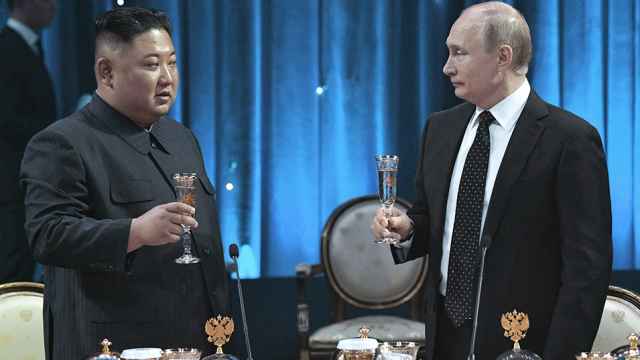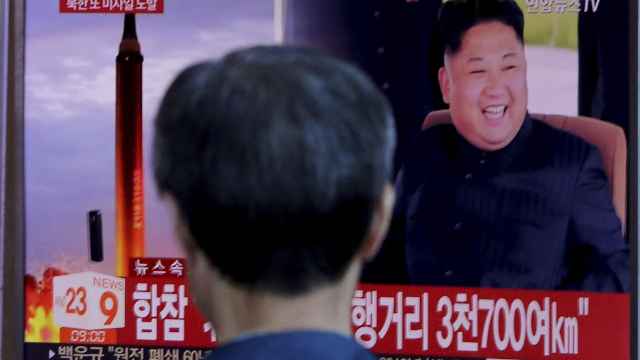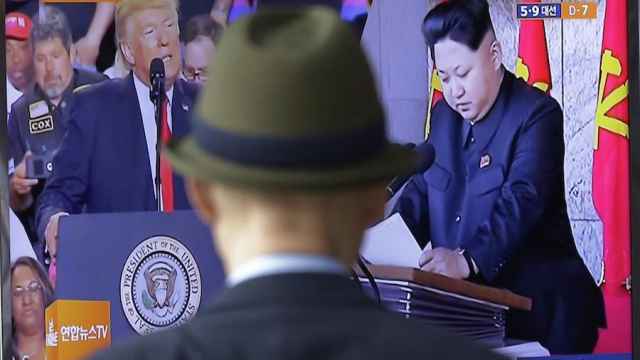The U.S. State Department’s latest Trafficking in Persons (TIP) Report describes labor camps in Russia filled with North Korean workers toiling in “slave-like conditions.” It says tens of thousands of North Korean workers abroad are forced to work up to 20 hours a day for meager compensation.
The descriptions conjure images of the gulag and Stalinism, leaving the reader with one conclusion: Russia must stop exploiting North Korean labor immediately.
But a closer look at North Korean migration to Russia tells a different story of these camps.
Crucially, this migration from North Korea indicates a degree of volition that the State Department report ignores: workers pay hefty bribes to local government officials for the opportunity to work outside the country.
This hardly sounds like slavery. If North Koreans are willing to pay large sums to get to these labor camps, their work there can’t rightly be considered slave labor.
In fact, most North Koreans see working abroad as a chance to dramatically improve their financial and social standing. For many, it is their only avenue of upward social mobility.
"If North Koreans are willing to pay large sums to get to these labor camps, their work there can’t rightly be considered slave labor."
North Korean economic migration to Russia dates back to before the establishment of the Democratic People’s Republic of Korea (DPRK). The first groups of North Korean laborers started working in Russia’s fishing and forest industries as early as 1946, when the northern part of the Korean peninsula was under Soviet military control.
Unlike most instances of Soviet-North Korean cooperation, this labor project was economically viable from the beginning: the Soviet Union and then Russia benefited from a new cheap and disciplined workforce while North Koreans benefited by earning foreign currency and sending it home.
From the 1970s to the 1990s, between 15,000 and 20,000 North Korean workers were employed in the Soviet Union.
Because North Koreans were hesitant to travel to Siberia in winter, they were initially sent there by force. But the situation drastically changed once they discovered that their neighbors were coming home rich. Older North Koreans still remember their surprise at seeing young people on motorcycles in their towns, the owners having brought Soviet models back to the Korean peninsula.
It’s true that workers received very low salaries. But they also received free room and board, meaning they could bring most of their earnings home. After a two-year stint, which was the typical length of a work contract in the U.S.S.R. at that time, the average North Korean could save a few thousand Soviet rubles.
Even then, North Koreans had to pay to work abroad: a supervisor who recommended a worker for a job in the U.S.S.R. generally received a television set as a bribe.
Now, payments are made in dollars or yuan and total around $500 to $700. It costs much less to work in other countries: $200 to work in China, $400 to $500 for work in the Middle East.
At present, approximately 30,000 North Koreans are employed in Russia.
The North Korean government tries to keep a close eye on its citizens abroad, which is why economic migrants are usually settled in close proximity to each other—either in dormitories or in the notorious labor camps in rural areas.
But since the late 1990s, a significant number of North Korean workers have been able to move freely within Russia in search of employment.
These workers are expected to hand over a fixed amount of their earnings to the government—a “planned contribution” that depends on a number of factors, including a worker’s skill and job location. On average, the North Koreans working in Russia have to surrender between $500 and $900 to the government per month.
Some of this money lines the pockets of North Korean managers and special service agents, but most of it ends up in the state coffers. This form of revenue, which totals a few hundred million dollars per year, incentivizes the DPRK to send its workers abroad.
After subtracting required payments to their government and day-to-day expenses, the average worker gets to keep $150 to $300 per month, which is significantly more than the $50 to $70 per month that the average North Korean man makes back home. And after two or three years in Russia, the North Korean migrant worker can return to his family with $4,000 to $6,000 in cash.
North Korean workers see Russia as a country with very good pay and tolerable living conditions. They also have more freedom in Russia compared to other countries: in China, for instance, they’re essentially prohibited from leaving their work sites.
Of course, North Korean workers continue to toil under extremely difficult conditions in Russia. But they would have an even harder time back home and earn significantly less. And so they work in Russia voluntarily.
The reasoning behind the American position is clear: the United States wants to put economic pressure on North Korea to make it abandon its nuclear program. Of course, this isn’t going to happen. The DPRK will never give up its nuclear weapons even if maintaining its nuclear program leads to famine and death. But Washington is still under the illusion that closing all avenues of financing for the DPRK, including economic migration, will change the regime’s behavior.
Efforts to portray putting economic pressure on North Korea as caring about the human rights of its citizens are disingenuous.
Putting an end to economic migration will not send North Korean workers back to 8-hour work days in safe, air-conditioned workshops. They will return to considerably worse working conditions than they experienced in Russia, and they’ll be earning significantly less.
Andrei Lankov is a historian, specialist in Korean studies and professor at Kookmin University in Seoul. An unabridged version of this piece was originally published by Carnegie Moscow.
The views and opinions expressed in opinion pieces do not necessarily reflect the position of The Moscow Times.
A Message from The Moscow Times:
Dear readers,
We are facing unprecedented challenges. Russia's Prosecutor General's Office has designated The Moscow Times as an "undesirable" organization, criminalizing our work and putting our staff at risk of prosecution. This follows our earlier unjust labeling as a "foreign agent."
These actions are direct attempts to silence independent journalism in Russia. The authorities claim our work "discredits the decisions of the Russian leadership." We see things differently: we strive to provide accurate, unbiased reporting on Russia.
We, the journalists of The Moscow Times, refuse to be silenced. But to continue our work, we need your help.
Your support, no matter how small, makes a world of difference. If you can, please support us monthly starting from just $2. It's quick to set up, and every contribution makes a significant impact.
By supporting The Moscow Times, you're defending open, independent journalism in the face of repression. Thank you for standing with us.
Remind me later.



